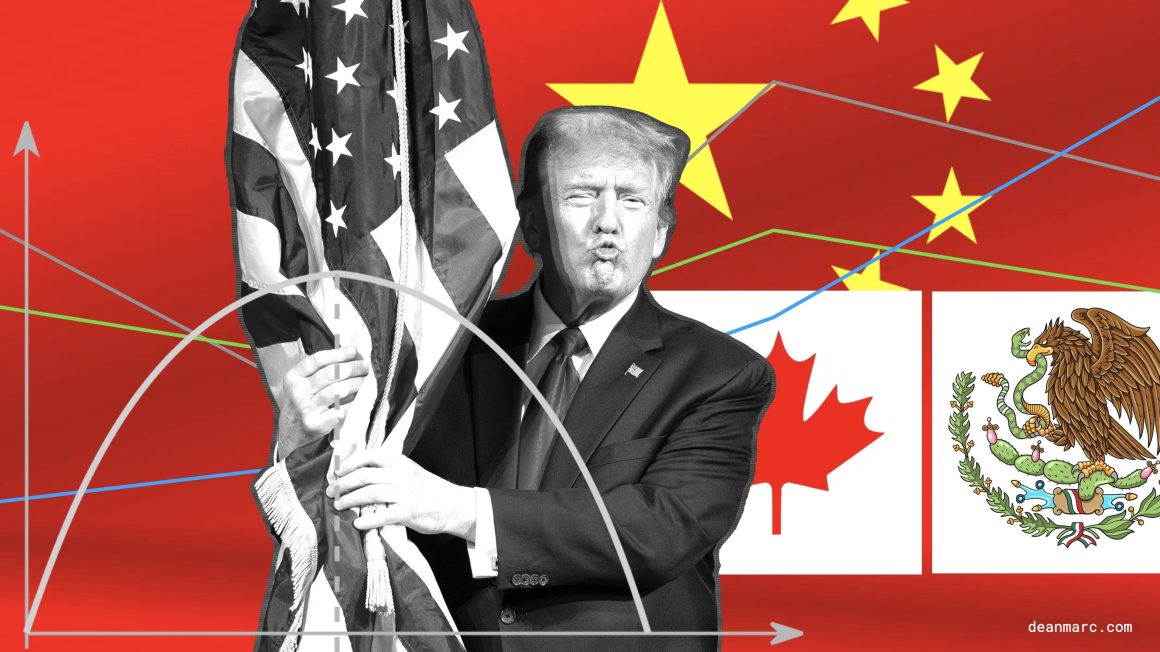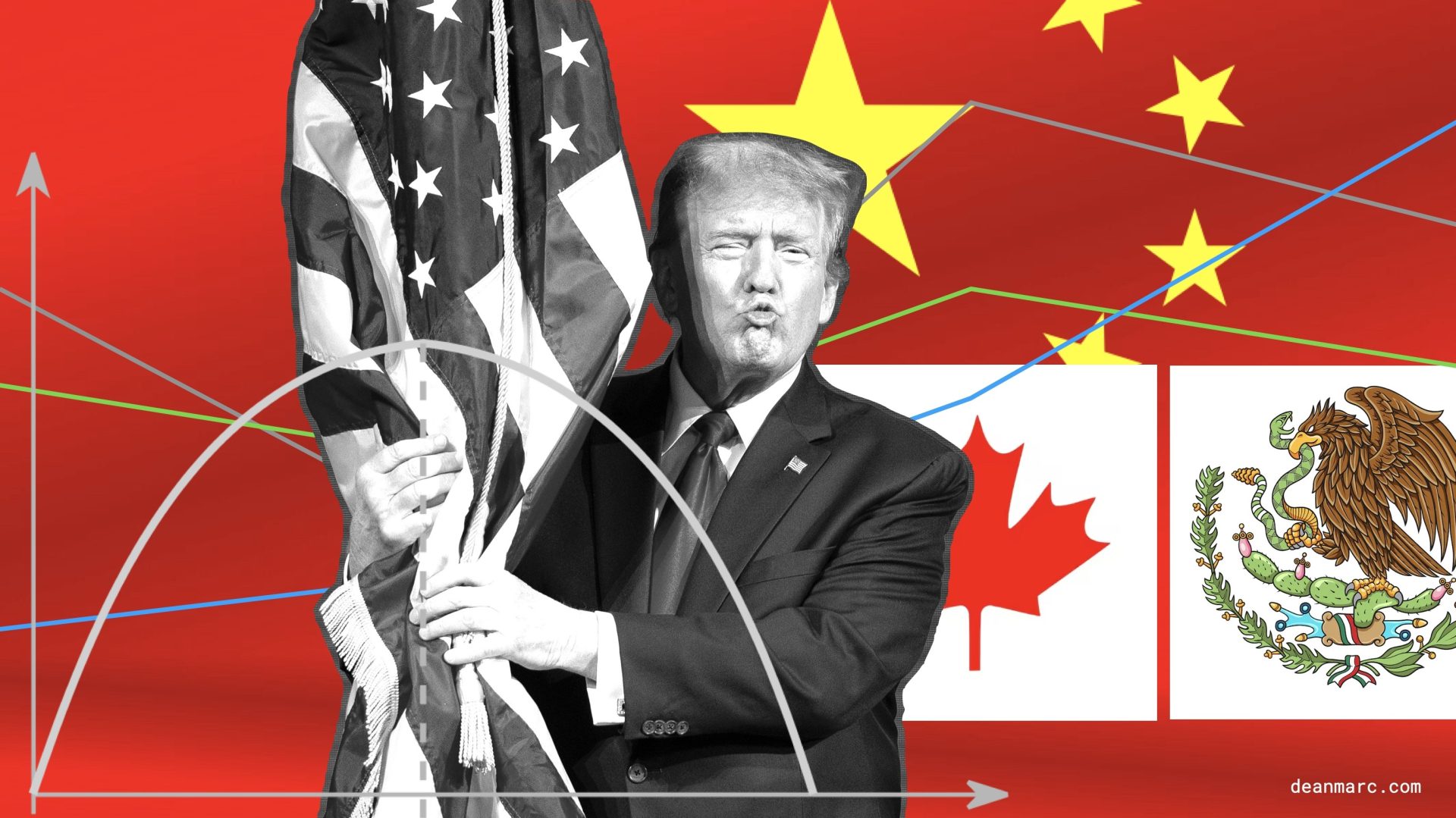Let’s be honest: talking about tariffs is about as sexy as discussing different types of dental floss. But here we are, because tariffs have somehow become the economic equivalent of a Taylor Swift album drop – everyone has an opinion, especially if they’ve never actually studied economics.
The Problem Isn’t Tariffs, It’s Trump
Trump’s approach to tariffs isn’t inherently wrong – shocking, I know. The issue isn’t the economic theory but the chaotic implementation. It’s like saying “exercise is good for you” and then immediately demonstrating by attempting to deadlift a car. The principle? Sound. The execution? A trip to the emergency room.
From our partners:
We’ve seen this movie before with Brexit and we all know how that went, don’t we? There was nothing fundamentally wrong with the concept of Britain reclaiming sovereignty (well, debatable), but doing Brexit without any actual plans, templates, or trade deals was like jumping out of a plane and then shouting, “Wait, does anyone know how to make a parachute?” No trade deals, no templates, no transition plan – just vibes and nationalism.

Tariffs Have Always Been A Thing (Just With Fancier Names)
Here’s the thing about tariffs that no one seems to mention: they’ve always been around. We’ve just called them different things – customs duties, import taxes, that mysterious extra fee when you order something from abroad. Acting like tariffs are some radical new invention is like pretending avocado toast wasn’t just guacamole on bread all along.
The distinction matters because it shifts our conversation from “tariffs: yes or no?” to “how and when should we use tariffs?” One is a pointless binary; the other might actually lead somewhere useful.
The real issue isn’t the tariff itself – it’s who’s wielding it. When Trump slaps tariffs around, he comes across like that guy at a party who keeps challenging everyone to arm-wrestling matches. Suddenly, what could be a boring economic tool becomes international drama worthy of Netflix.
Follow the Money (Or Lack Thereof)
At its core, the American economy has a cash flow problem, not unlike that friend who’s always “just about to” pay you back. The US is swimming in debt while China sits on a dragon’s hoard of American dollars. Tariffs provide an immediate injection of cash – like financial espresso for a hungover economy.
But there’s a bigger strategy at play: forcing companies to rethink their supply chains. When your CFO realizes that manufacturing in China now costs more than doing it in Michigan, suddenly that abandoned factory in Detroit starts looking attractive again. Reshoring manufacturing isn’t just about jobs – it’s about reducing dependency on countries whose values increasingly diverge from our own.
The Laffer Curve: Not Just a Funny Name
Economists have a concept called the Laffer Curve, which sounds like a ride at an economist’s theme park but is actually about how taxation and tariffs works. It illustrates how taxation generates more revenue – but only up to a point. Push too far, and it’s like squeezing an empty toothpaste tube: you look increasingly desperate and get diminishing returns.
The same applies to tariffs. A 10% tariff might achieve your goals, but a 50% tariff could destroy global supply chains, spark retaliation, and make everything from iPhones to underpants unaffordable. There’s a sweet spot somewhere in between – the challenge is finding it without breaking everything first.
It’s Not About Canada, It’s About China
When Trump started tariff wars with Canada and Mexico, it was like picking a fight with your roommates when you’re actually mad at your boss. These weren’t the real targets – they were collateral damage in a strategy aimed squarely at China.
The China-Russia axis represents the actual concern for American policymakers. As these autocracies cozy up to each other, the U.S. is desperately trying to reduce its dependence on their economies while pressuring allies to do the same. Tariffs are just one tool in what’s becoming a full-scale economic cold war.
The Distribution Problem No One Wants to Talk About
Here’s the dirty secret about American capitalism that both parties avoid addressing: if you keep consolidating wealth at the top while gutting the middle class, eventually you run out of customers who can afford your products. Henry Ford understood this when he paid his workers enough to buy the cars they built. Today’s corporations seem to have forgotten this lesson.
If tariff-induced price increases hit consumers already stretched thin by inflation, housing costs, and stagnant wages, we risk accelerating a downward economic spiral. There’s no AI economy coming to save us – AI doesn’t buy products, people do. And people need money to buy things.
Where Do We Go From Here?
Honestly? I have no idea. I’m not an economist – I just play one in op-eds. But maybe the answer isn’t “tariffs bad” or “tariffs good” but “can we please stop implementing major economic policies the way a toddler decorates a birthday cake?” The tariff debate needs nuance, not absolutism. We should be asking:
- What specific industries genuinely need protection for national security?
- How can we implement tariffs with clear metrics, sunset provisions, and adjustment periods?
- What complementary policies might offset consumer price increases?
- How do we coordinate with allies to prevent easy circumvention?
Instead of treating tariffs as either economic salvation or the apocalypse, we should see them as tools in a complicated economic toolkit – useful in specific circumstances, dangerous when misapplied, and always requiring precision.
The Bottom Line
Trump isn’t wrong that America needs to reconsider its trade relationships, especially with authoritarian regimes. But slapping tariffs around like a drunk person with a fly swatter isn’t strategy – it’s tantrum-as-policy.
Effective tariff policy requires planning, coordination, and clear objectives. It means balancing short-term pain against long-term gain. Most importantly, it demands recognizing that in a global economy, there are no simple solutions – just complicated trade-offs.
Maybe instead of asking whether tariffs are good or bad, we should be asking a different question: How do we build an economy that works for everyone, not just those at the top? Until we answer that, we’re just rearranging deck chairs on the Titanic – with or without tariffs.
For enquiries, product placements, sponsorships, and collaborations, connect with us at [email protected]. We'd love to hear from you!
Our humans need coffee too! Your support is highly appreciated, thank you!








